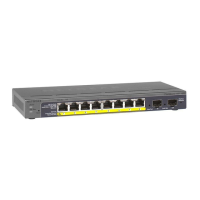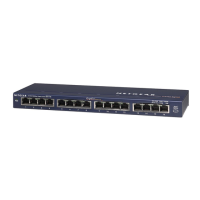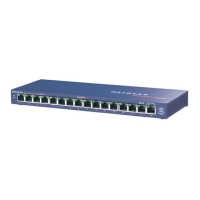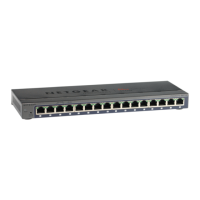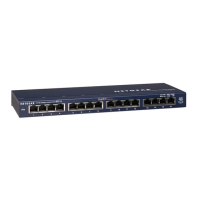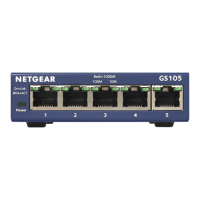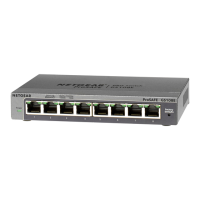VLAN Overview
Virtual LANs (VLANs) are made up of networked devices that are grouped logically into
separate networks. You can group ports on a switch to create a virtual network made
up of the devices connected to the ports.
Ports can be grouped in VLANs using port-based or 802.1Q criteria:
•
Port-based VLANs. Assign ports to virtual networks. Ports with the same VLAN ID
are placed in the same VLAN. This feature provides an easy way to partition a network
into private subnetworks.
•
802.1Q VLANs. Create virtual networks using the IEEE 802.1Q standard. 802.1Q
uses a VLAN tagging system to determine which VLAN an Ethernet frame belongs
to. You can configure ports to be a part of a VLAN. When a port receives data tagged
for a VLAN, the data is discarded unless the port is a member of that VLAN. This
technique is useful for communicating with devices outside your local network as
well as receiving data from other ports that are not in the VLAN. However, for you
to be able to use an 802.1Q VLAN, you must know the VLAN ID.
Create Basic Port-Based VLANs
A port-based VLAN configuration lets you assign ports on the switch to a VLAN. The
number of VLANs is limited to the number of ports on the switch. In a basic port-based
VLAN configuration, ports with the same VLAN ID are placed into the same VLAN.
You can also assign ports to multiple VLANs (see Assign Ports to Multiple Port-Based
VLANs on page 31).
By default, all ports are members of VLAN 1.
To create basic port-based VLANs:
1. Connect your computer to the same network as the switch.
You can use a WiFi or wired network connection, or connect directly to a switch that
is off-network using an Ethernet cable.
2. Launch a web browser.
3.
In the address field of your web browser, enter the IP address of the switch.
The login page displays.
4. Enter the switch password.
The default password is password. The password is case-sensitive.
The Switch Information page displays.
User Manual30Use VLANS for Traffic
Segmentation
8-Port Gigabit Ethernet Smart Managed Plus Switch Model GS110EMX
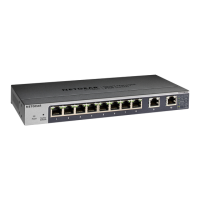
